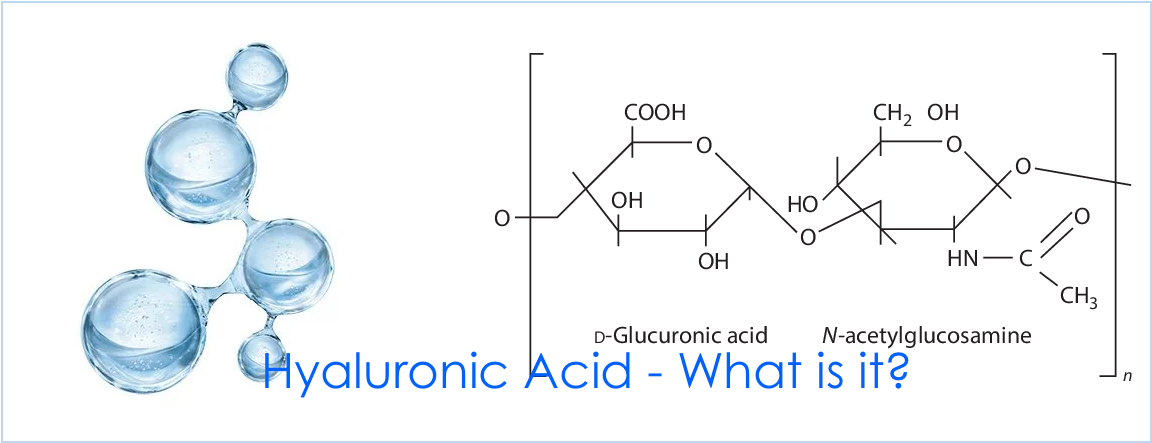Today’s post is about hyaluronic acid. That ingredient that every skin care company is sprucing about in the media.
In this post we will look at what it actually is and is it worthy of all the media hype.
What is hyaluronic acid or HA?
HA is a humectant — a substance that retains moisture — and it is capable of binding over one thousand times its weight in water. It is actually a substance that occurs naturally in the body where its primary function is to trap water inside tissue cells as well as lubricate the joints. The skin contains about half of the hyaluronic acid in the body. The HA binds to water molecules, which helps keep the skin hydrated and supple.
It also plays a crucial role in wound healing by controlling inflammation and redirecting blood flow to damaged tissue.
Hyaluronic acid levels in the body decrease as people age. This contributes to the physical signs of aging, such as the appearance of wrinkles, and to age-related conditions, including osteoarthritis.
Different uses and benefits
The most talked about use for HA is anti-aging and the skin. However, it is also used in some eye drops to help with dry eye symptoms. It has been found to assist with wound healing when used topically.
Hyaluronic acid injections are also used to treat osteoarthritis.
Research has also found that hyaluronic acid supplements may help reduce symptoms of acid reflux.
As a skin moisturiser, there are a variety of serums, creams and lotions which contain HA.
Studies have found that HA comes in different molecular sizes. The larger molecules, are the best at binding water and offering hydration, cannot penetrate into the skin. When applied topically (to the skin), these molecules sit on top of the skin. This will only Improve hydration at the very surface.
Much smaller molecules can penetrate deeper into the skin; however, these molecules bind less water. For a product to provide maximum surface hydration, it needs to contain HA molecules in a variety of sizes.
HA is also used in dermal fillers, many of which are composed of HA in an injectable gel form. HA fillers add volume by physically filling the area where they are placed, as well as by drawing water to enhance the filling effect. Hyaluronic fillers, can last anywhere from six months to 2 years before being gradually metabolised by the body, depending on their specific chemical makeup.
So, Hyaluronic acid is a really versatile substance and may be the solution you are looking for. As always, it is recommended to seek advice from your chosen health professional.
We hope you found this information interesting,
Till the next post,
Live clean n prosper
Sources: Harvard Health Publishing – Nation Library of Medicine – Web MD


